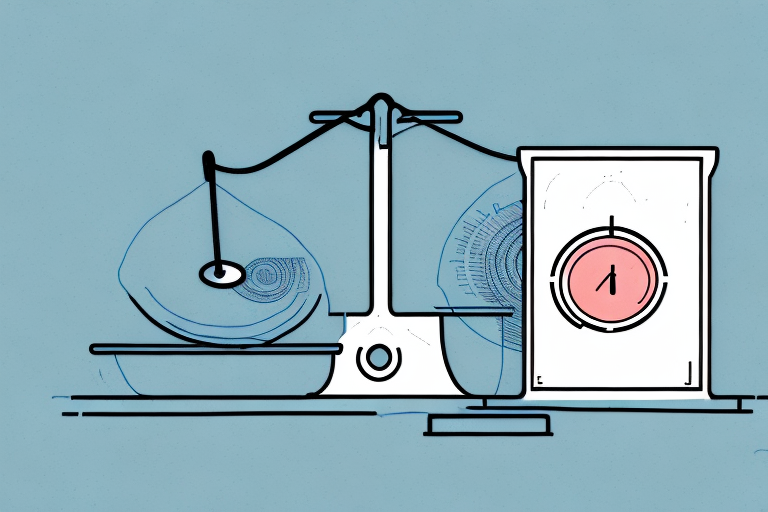Understanding UPS Shipping Rates for Packages Weighing Up to 20lbs
UPS is one of the leading carriers in the world, transporting millions of packages every day. When it comes to shipping rates, understanding how UPS calculates them can be a challenge, especially if you're shipping packages that weigh up to 20lbs. In this article, we'll take a closer look at how UPS shipping rates work and provide you with tips on how to save money on shipping costs.
What is UPS?
UPS, or United Parcel Service, is a multinational package delivery and supply chain management company. They offer a range of shipping services, including express shipping, ground shipping, freight shipping, and international shipping. Founded in 1907, UPS has grown to become one of the world's largest package delivery companies, with a vast network of vehicles, aircraft, and distribution centers across the globe.
In addition to their shipping services, UPS also offers logistics and supply chain solutions to businesses of all sizes. These solutions include inventory management, warehousing, and transportation management. UPS has also been at the forefront of sustainable practices in the shipping industry, with initiatives such as alternative fuel vehicles and carbon offset programs. With their commitment to innovation and customer satisfaction, UPS continues to be a leader in the logistics and shipping industry.
How Do UPS Shipping Rates Work?
When it comes to shipping rates, UPS's pricing structure is based on a combination of factors, including the weight, dimensions, and destination of your package. The type of service you choose also impacts the price you'll pay.
It's important to note that UPS offers various discounts and promotions throughout the year, which can help you save money on your shipping costs. Additionally, if you're a frequent shipper, you may be eligible for special pricing programs that can provide even greater savings.
Different Types of UPS Shipping Services
UPS offers a range of shipping services to meet your needs, including:
- UPS Express Saver - For time-sensitive shipments that require delivery by the end of the day. Learn more.
- UPS Express - For urgent shipments that need to arrive the next morning.
- UPS Standard - For less time-sensitive shipments that can take up to five days to be delivered.
- UPS Ground - For domestic deliveries within the U.S. Details here.
- UPS Worldwide Express Freight - For heavy and bulky shipments that need to be transported quickly. More information.
UPS also offers additional services such as signature confirmation, insurance, and Saturday delivery for an extra fee. Signature confirmation ensures that the recipient signs for the package upon delivery, while insurance provides coverage for lost or damaged packages. Saturday delivery is available for certain shipping services and destinations, allowing for weekend deliveries.
Factors That Affect UPS Shipping Rates
Several factors impact the cost of UPS shipping rates, including:
- The weight and dimensions of your package
- The shipping service you choose
- The distance your package needs to travel
- The type of packaging you use
- Additional services, such as insurance, signature confirmation, or special handling requirements
Another factor that can affect UPS shipping rates is the time of year. During peak holiday seasons, shipping rates may increase due to high demand and limited availability. It's important to plan ahead and consider shipping options early to avoid higher costs.
Additionally, the destination of your package can impact the shipping rate. Shipping to a remote or rural area may result in higher rates due to limited transportation options and increased delivery times. It's important to check with UPS to determine if any additional fees or surcharges may apply to your specific destination.
Understanding the Dimensions of Your Package
When it comes to calculating shipping rates, UPS considers both the weight and dimensions of your package. To determine the dimensions of your package, measure the length, width, and height in inches and multiply them together. This will give you the package's cubic size, which is used to determine the price.
It's important to note that UPS has specific guidelines for measuring package dimensions. For example, if your package is not a perfect rectangle, you may need to measure the length, width, and height at their furthest points. Additionally, if your package is particularly large or heavy, you may need to use specialized equipment or services to ensure it is properly handled and shipped.
Another factor to consider when shipping packages is the type of packaging material used. UPS recommends using sturdy, corrugated cardboard boxes that are designed for shipping. If you choose to reuse a box, make sure it is in good condition and remove any old labels or markings. Using the proper packaging material can help protect your shipment and prevent damage during transit.
Understanding the Weight of Your Package
The weight of your package also plays a significant role in determining shipping rates. UPS uses actual weight or dimensional weight, whichever is greater. Dimensional weight is calculated by dividing the package's cubic size by a factor known as the dimensional weight divisor. The current divisor for domestic packages is 139, while the divisor for international packages is 166.
It's important to note that some items may be considered "oversized" by UPS, even if they don't meet the standard dimensional weight requirements. These items may include large or irregularly shaped packages, such as furniture or sporting equipment. In these cases, additional fees may apply, and it's best to check with UPS directly to determine the most accurate shipping rates for your package.
How to Choose the Right Packaging for Your Shipment
The right packaging can help you save money on shipping costs. When selecting packaging, choose a box that's just big enough to fit your item and provide enough padding to protect it during transport. Avoid using oversized boxes that will increase your shipping costs and potentially damage your item during transport.
It's also important to consider the weight of your item when choosing packaging. If your item is heavy, it's best to use a double-walled box to ensure it can withstand the weight and won't break during transport. Additionally, if you're shipping fragile items, consider using bubble wrap or packing peanuts to provide extra cushioning and protection. By taking these factors into consideration, you can ensure your shipment arrives safely and at a reasonable cost.
Understanding UPS Zone-Based Pricing System
UPS uses a zone-based pricing system, which means that shipping rates increase as the distance between the origin and destination of your package increases. UPS divides the U.S. into shipping zones based on the distance between the origin and destination zip codes.
The zone-based pricing system is designed to reflect the cost of shipping to different parts of the country. This means that shipping to a nearby state will be less expensive than shipping to a state on the other side of the country. The distance between the origin and destination zip codes determines the shipping zone, which in turn determines the shipping cost.
It's important to note that the weight and size of the package also affect the shipping cost, in addition to the shipping zone. Heavier and larger packages will cost more to ship, even if they are going to a nearby zone. Understanding the zone-based pricing system can help you estimate the shipping cost for your package and plan accordingly.
How to Calculate UPS Shipping Rates for Packages Weighing Up to 20lbs
Calculating UPS shipping rates can be done using their online shipping calculator. Simply enter the weight and dimensions of your package, along with the zip codes of the origin and destination, and select the type of service you need. The calculator will provide you with an estimated shipping cost.
UPS offers various shipping options, including ground, air, and international services. The rates for each service may vary depending on the weight, size, and destination of your package. Additionally, UPS offers discounts for frequent shippers and those who use their online shipping tools.
Before shipping your package, it's also important to properly package and label it. UPS provides guidelines for packaging and labeling on their website to ensure your package arrives safely and on time. Following these guidelines can also help prevent any additional fees or delays in delivery.
Tips for Saving Money on UPS Shipping Rates
Here are some tips to help you save money on UPS shipping rates:
- Choose the right packaging to avoid oversized boxes
- Use UPS's online shipping calculator to compare rates for different services
- Consider using slower shipping services for non-urgent packages
- Take advantage of UPS's discounted rates for high-volume shippers
- Consider using third-party shipping software to streamline your shipping process and save money on shipping costs.
Another way to save money on UPS shipping rates is to negotiate rates directly with UPS. If you are a high-volume shipper, you may be able to negotiate lower rates based on your shipping volume and frequency. Additionally, you can consider consolidating your shipments to take advantage of UPS's freight services, which can be more cost-effective for larger shipments.
Common Mistakes to Avoid When Shipping with UPS
Here are some common mistakes to avoid when shipping with UPS:
- Using incorrect package dimensions or weight
- Using oversized boxes
- Not properly securing your package
- Not understanding UPS's shipping policies and restrictions
Another common mistake to avoid when shipping with UPS is not properly labeling your package. It is important to clearly label your package with the recipient's name, address, and phone number. This will ensure that your package is delivered to the correct location and that the recipient can be contacted if necessary. Additionally, make sure to include your own contact information in case there are any issues with the delivery. Proper labeling can help prevent delays and ensure a smooth shipping process.
How to Track Your UPS Shipment
You can track your UPS shipment using their online tracking tool. Simply enter your tracking number, and you'll be provided with shipping updates and delivery status.
UPS offers several different tracking options, including email and text message updates. You can choose to receive notifications for every shipping update, or only for specific milestones such as when your package is out for delivery.
If you're having trouble tracking your shipment online, you can also contact UPS customer service for assistance. They can provide you with real-time updates on your package's location and estimated delivery time, as well as help you resolve any issues that may arise during the shipping process.
Customer Service and Support for UPS Shipments
If you have questions or need help with your UPS shipment, you can contact their customer service team by phone or email. UPS also offers support through their online chat service and their social media channels.
By understanding how UPS shipping rates work and implementing best practices, you can save money on shipping costs and ensure that your packages arrive safely and on time.
UPS also offers additional services such as package tracking, delivery confirmation, and insurance options for added peace of mind. You can easily track your package's progress through the UPS website or mobile app, and receive notifications on its estimated delivery time. Additionally, UPS provides detailed information on their website regarding their shipping policies and procedures, including information on prohibited items and international shipping regulations.






















